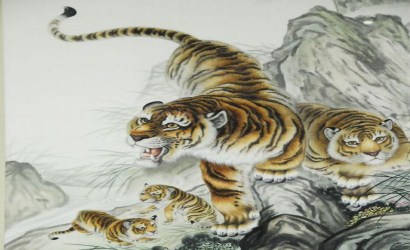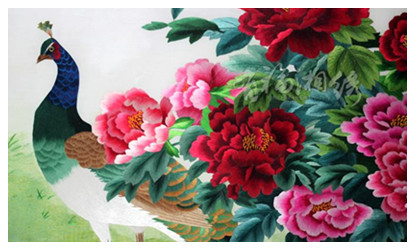Skype: neodalle-travel
Tel: +86 135 7447 2266
E-mail: sales@zhangjiajieholiday.com

 around the third century B.C. Excavations of archaeological sites dating back to this period have discovered examples of embroidery produced in the Hunan province which use fine silk and multiple colors. However, the Xiang embroidery style that is most familiar to modern audiences developed during the Qing dynasty (1644-1911). Because of its relatively late introduction, Xiang embroidery has enjoyed the benefits of being able to borrow stylistic elements from the older Su and Yue embroidery styles. But despite this cross pollination of styles, Xiang embroidery embodies many unique characteristics that mark it a style all on its own.
around the third century B.C. Excavations of archaeological sites dating back to this period have discovered examples of embroidery produced in the Hunan province which use fine silk and multiple colors. However, the Xiang embroidery style that is most familiar to modern audiences developed during the Qing dynasty (1644-1911). Because of its relatively late introduction, Xiang embroidery has enjoyed the benefits of being able to borrow stylistic elements from the older Su and Yue embroidery styles. But despite this cross pollination of styles, Xiang embroidery embodies many unique characteristics that mark it a style all on its own. Xiang embroidery is done on transparent chiffon silk. The silk threads are dyed and then soaked in water containing pod nuts – the oil in these nuts tends to make the thread soft and easy to work with. There are several distinct needling techniques used, and their lack of precision is by design – the random or uneven nature of this needling means that colors and textures are often mixed together with great effect. The most famous examples of Xiang embroidery use tigers as their subject. Birds, landscape scenes, and people can also be used as subjects – one of the characteristics of Xiang embroidery is that animals and people seem to be alive, thanks to the vibrant colors and often almost three dimensional effect created by the thick knots and stitching. Xiang embroidery pieces are often two sided, with different patterns or images on each side of the transparent chiffon.
Xiang embroidery is done on transparent chiffon silk. The silk threads are dyed and then soaked in water containing pod nuts – the oil in these nuts tends to make the thread soft and easy to work with. There are several distinct needling techniques used, and their lack of precision is by design – the random or uneven nature of this needling means that colors and textures are often mixed together with great effect. The most famous examples of Xiang embroidery use tigers as their subject. Birds, landscape scenes, and people can also be used as subjects – one of the characteristics of Xiang embroidery is that animals and people seem to be alive, thanks to the vibrant colors and often almost three dimensional effect created by the thick knots and stitching. Xiang embroidery pieces are often two sided, with different patterns or images on each side of the transparent chiffon.
 Ask Questions ?
Ask Questions ?